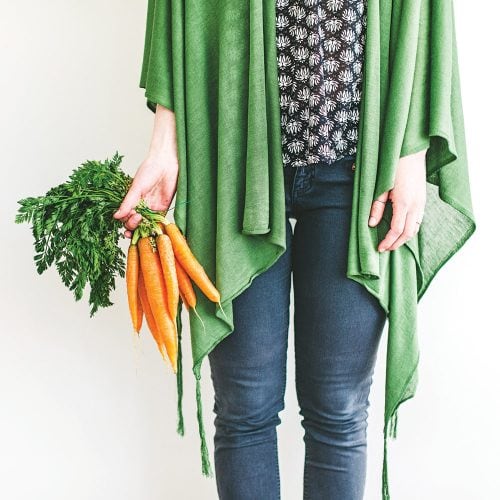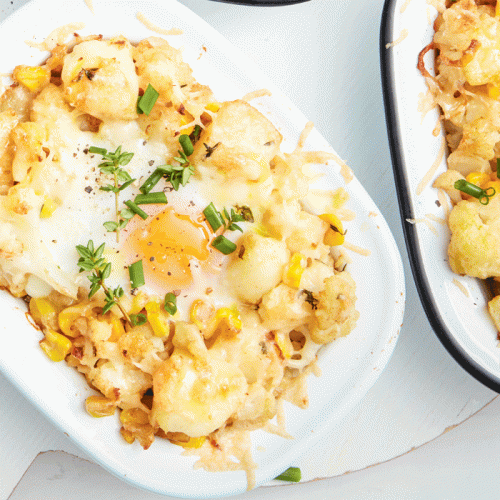
‘Clean eating’ is popular among celebrities and bloggers but what exactly does eating ‘clean’ involve and does that mean some food is ‘dirty’? Dietitian Angela Berrill finds out.
What is clean eating?
Clean eating is a recent dietary trend to hit the block, with advocates including celebrities Gwyneth Paltrow and Miranda Kerr, and bloggers and social media stars, such as the ‘Food Babe’, Vani Hari, who has more than one million Facebook followers. It’s often promoted as being the only truly healthy and virtuous way to eat, but what exactly eating ‘clean’ means can vary largely from one follower to the next. Foods can be classified as either ‘clean’ or ‘unclean’ based on personal perception or on a belief about health and nutrition properties, such as a perceived ability of a food to cure cancer or detoxify the body. These perceptions are not necessarily based on robust scientific evidence.
While the set of food rules can vary, clean eating is generally defined as following these core principles:
- Eating whole food and eliminating processed food — the degree of processing that is acceptable often comes down to individuals.
- Eliminating sugar from the diet — again, this is open to interpretation. For some this may mean the elimination of refined sugar only, while for others this may mean the exclusion of ALL sugar, including naturally occurring.
- Choosing organic food where possible.
- Avoiding all preservatives, colour additives and binders, stabilisers, emulsifiers and fat replacers.
Other features may include the elimination of grains, gluten, soy, dairy, or all animal products. Some clean eaters may only include raw foods, go ‘paleo’, or choose to shop sustainably and only purchase foods grown locally and in a sustainable way.
Is clean eating healthier?
It can be — especially if your previous diet was based on mostly processed foods containing high levels of saturated fat, sugar and salt and little in the way of vitamins and minerals. But, while some of the features of clean eating share common elements with the Ministry of Health’s Eating and Activity Guidelines and the Heart Foundation’s Visual Food Guide, which are based on robust scientific evidence, it is extremes of clean eating and the unnecessary elimination of foods (and even entire food groups) that have many nutrition and medical experts worried.
Nutrition is complex. If a food or food group is eliminated, for whatever reason, caution needs to be taken to ensure the remaining diet includes all the essential nutrients in the right amounts. It’s not as simple as just removing a food or food group from your diet. You need to ensure you are replacing it with something else, providing a similar range of nutrients. Otherwise, you can run the risk of becoming nutrient deficient. For this reason, if you do wish to eat ‘clean’, it is important that you do so in consultation with a nutrition expert to ensure that you are not putting yourself at risk of nutritional deficiencies.
The pitfalls
Taken to the extreme, clean eating has the potential to progress into an eating disorder called ‘orthorexia’. Different from anorexia, where sufferers have extreme anxiety about food and weight gain and focus on restricting how much they eat, sufferers of orthorexia are obsessive about eating only healthy or pure food and focus on food quality. While sufferers start out with the best of intentions, food purity ends up becoming so central to everyday life, that other aspects are ignored. This can lead to isolation from social situations where they are unable to control the food they eat (see Warning signs, below).
Other than the potential for nutritional deficiencies, psychological issues can come about from labelling and categorising foods as being ‘clean’, ‘good’ or ‘pure’. By classifying foods in this way, it signals that other foods are ‘bad’, ‘impure’ or ‘unclean’ which can lead to feelings of guilt or transgression when these foods are eaten. Unfortunately, by avoiding ‘unclean’ foods, a vicious cycle can be set up. I’m sure you know the feeling — where you try really hard to avoid a certain food, but then that food is all you can think about, and then you end up eating that food, resulting in guilty feelings, and so on. The sense of virtue that comes with eating clean can result in followers feeling as if their world has collapsed when ‘slip-ups’ happen. This can also occur if followers are put in a situation where they feel they are unable to control their food, as can often be the case when eating out or eating with family or friends.
Finding the balance
We don’t need to go to extremes to be healthy. All foods can be part of a healthy diet — it’s finding the right balance that works for you and your health that’s important. We also need to remember that healthy eating means more than simply eating healthy food. It is just as important to have a healthy relationship with food — one that is not fed out of fear of slip-ups or being virtuous, but is built on the enjoyment of eating and all that has to offer.
Food is more than fuel or nutrition, it is there for enjoyment, celebrations and social gatherings and is one of the many pleasures life has to offer.
Who to turn to
Some clean-eating advocates don’t have any nutrition credibility.
If you’re seeking nutrition advice, turn to a dietitian or registered nutritionist, rather than a celebrity, blogger or Insta-guru. Your health is at stake. It is in your best interests to put your trust in the qualified professionals, rather than someone who has the most followers on Instagram.
Warning signs clean eating may be a problem
- Spending an excessive amount of time thinking about food.
- The nutritional value of food overrides the enjoyment you get from eating it.
- Quality of life has decreased as the quality of the diet has increased.
- Experiencing a boost in self-esteem and feelings of peace and control when you eat healthily.
- Feelings of guilt when ‘unhealthy’ or ‘impure’ foods are eaten.
- Giving up foods you previously enjoyed in order to eat the ‘right’ foods.
- Social isolation from friends and family because you find it difficult to eat out.
- Eating a nutritionally unbalanced diet owing to beliefs about food ‘purity’.
- A preoccupation and worry about eating impure foods.
- Rigid avoidance of foods deemed to be unhealthy.
- Intolerance of food beliefs of others.
Key elements of healthy eating
Eating a diet of mostly whole and less-processed food which includes:
- Plenty of non-starchy vegetables and fruit
- Some grain foods and starchy vegetables
- Some legumes, fish, seafood, eggs, poultry, lean meat
- Some reduced-fat milk, yoghurt and cheese
- Some healthy oils, nuts, seeds
- Cutting back on refined sugar, sodium, saturated fat
If you are concerned you may be suffering from disordered eating, please contact a dietitian or registered nutritionist.
Article sources and references
- Bratman S & Knight D. 2000. Health food junkies: overcoming the obsession with healthy eating. New York:Broadway Books
- Bratman S. 2010. Original orthorexia essay www.orthorexia.com/original-orthorexia-essay/ Accessedhttps://www.orthorexia.com/original-orthorexia-essay/
- Heart Foundation. 2016. Visual Food Guide. Auckland: The National Heart Foundation of New Zealandhttps://www.heartfoundation.org.nz/search?keywords=Visual+Food+Guide
- Mathieu J. 2005. What is orthorexia? Journal of the American Dietetic Association 105:1510-2https://www.ncbi.nlm.nih.gov/pubmed/16183346
- Ministry of Health. 2015. Eating and Activity Guidelines for New Zealand Adults. Wellington: Ministry of Healthhttps://www.health.govt.nz/publication/eating-and-activity-guidelines-new-zealand-adults
www.healthyfood.com










